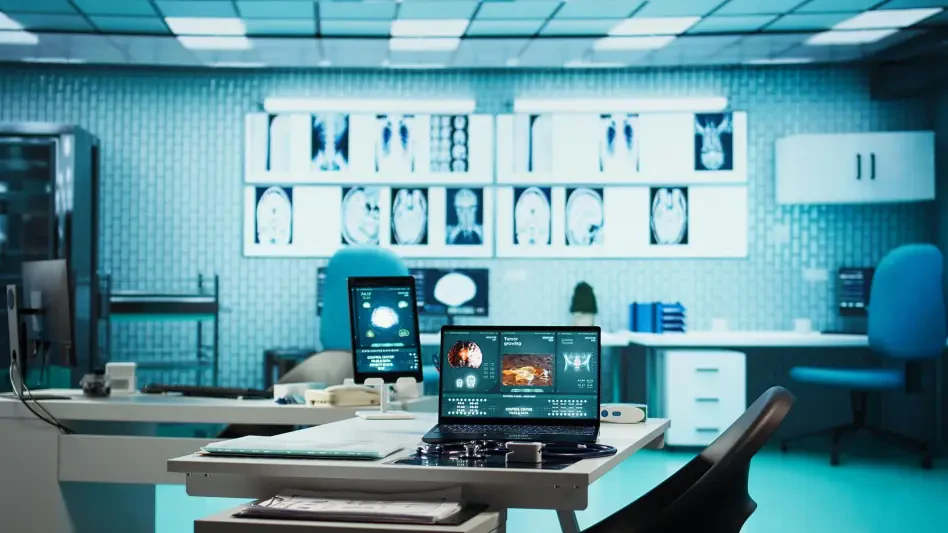Beyond 2025, healthcare is expected to continue evolving toward a fully digital environment. In this setting, it’s crucial for institutions to connect with each other and exchange patient information. This helps everything run smoothly and ensures good care. Every organization, whether a clinical network or a digital care platform, now relies on seamless communication between different systems. This distribution is made possible through interoperability standards that govern the transmission and storage of health data.
This article provides an overview of the primary standards that will shape healthcare interoperability beyond 2025. It examines the key categories that define the transmission and use of health data:
Messaging standards
Terminology standards
Clinical documentation standards
Understanding these frameworks is crucial for organizations aiming to enhance data consistency and enhance collaborative care delivery.
The Role of Interoperability Standards
The healthcare environment is inherently complex. It involves an increasing number of applications and systems that must work together to support safe and efficient patient care. Interoperability standards ensure that this collaboration is both secure and structured. They enable consistent data exchange within and across institutions, ensuring that information is both accurate and interpretable.
The primary purpose of integration protocols is to ensure that professionals can read and utilize health data without compromising meaning or integrity. This objective is central to achieving true digital transformation in healthcare.
The Primary Categories of Healthcare Interoperability Standards
Many health information exchanges still face gaps in compliance and awareness. Studies indicate that a considerable percentage of organizations are unsure whether the files they transmit or receive align with regulations. This highlights a persistent need for education and support in the implementation process.
Read on to explore the principal categories and examples of interoperability protocols that define modern healthcare.
Messaging Standards
Messaging standards govern the flow of information between various healthcare applications. They establish clear rules for data structure, message format, and transmission methods, ensuring that clinical files can flow consistently and securely across various systems.
Two of the most widely recognized messaging frameworks are Health Level Seven and Digital Imaging and Communications in Medicine.
1. Health Level Seven
Health Level Seven, developed as an international framework for information exchange, has become the most widely adopted messaging standard in healthcare. It provides a structured approach for transferring clinical and administrative files between various applications, including electronic health record systems and billing platforms.
The earlier versions of Health Level Seven (beginning in the 1980s) were designed to facilitate message-based arrangements between hospital departments. They introduced a structured format using specific symbols to separate data fields. Over time, successive versions expanded the message types and supported greater flexibility, allowing organizations to customize the standard to suit internal processes.
By the early 2000s, Health Level Seven had announced its third version, which introduced a reference data model that unified the representation and interchange of clinical results. This method brought a greater emphasis on semantic consistency and data structure, enabling interoperability across wider systems and use cases. It also incorporated web-friendly technologies, such as Extensible Markup Language and Hypertext Transfer Protocol, aligning healthcare communication with broader digital transformation trends.
2. Fast Healthcare Interoperability Resources
The most recent evolution of the Health Level Seven family is Fast Healthcare Interoperability Resources. It combines elements of the earlier versions but introduces a more accessible, application-driven approach to data exchange. This model uses open web standards, enabling faster adoption and integration into modern healthcare ecosystems.
Fast Healthcare Interoperability Resources is built to support flexible data sharing through application programming interfaces. It enables healthcare applications to quickly send and receive information without requiring complex message setups. Also, this rulebook aligns with current technology practices by allowing compatibility with both defined and semi-defined data formats. Its emphasis on scalability and ease of implementation has made it one of the most widely discussed and rapidly growing frameworks in healthcare interoperability.
3. Digital Imaging and Communications in Medicine
Digital Imaging and Communications in Medicine is a global standard for managing medical images and related files. It defines both the file format and the communication protocols used for transmitting radiology and imaging data across healthcare networks.
This code supports interoperability among imaging devices and programs, ensuring that insights generated by diagnostic equipment can be shared and viewed consistently across institutions. It also facilitates structured workflows for image storage and retrieval. It connects imaging and clinical data systems, such as radiology information systems and hospital records.
By regulating rules surrounding scan results, this model has become essential for ensuring that diagnostic records remain accurate and compatible across platforms.
4. The E1381
Another key messaging norm is Advancing Standards Transforming Markets’ E1381, which developed the computerized transmission of data from laboratory equipment to computer systems. It provides a modular and structured method for transmitting results and other laboratory information. Although this protocol was initially based on earlier Health Level Seven standards, it remains widely used for integrating diagnostic equipment in clinical environments.
Terminology Standards
Terminology regulations provide the vocabulary used to describe clinical concepts accurately and consistently. They ensure that when one program records a diagnosis or a procedure, another one can accurately interpret it. By defining common languages for medical records, these frameworks improve data integrity and enable analytics across systems.
Among the most significant terminology standards are Systematized Nomenclature of Medicine Clinical Terms, the International Statistical Classification of Diseases, Logical Observation Identifiers Names and Codes, and Current Procedural Terminology.
1. Systematized Nomenclature of Medicine Clinical Terms
Systematized Nomenclature of Medicine Clinical Terms provides a comprehensive and structured medical vocabulary. Maintained by an international organization, it includes hundreds of thousands of concepts that describe medical findings, procedures, and conditions. Each concept is uniquely identified and logically related to others, allowing for consistent data representation.
This terminology improves the quality and accuracy of electronic health information. It supports multilingual representation and can be mapped to other classification schemes, facilitating interoperability across different regions and technologies.
2. International Statistical Classification of Diseases
The International Statistical Classification of Diseases, developed by the World Health Organization, organizes diseases, symptoms, injuries, and causes of death into a regulated coding system. The eleventh revision of this standard provides greater detail and supports integration into digital health environments.
Hospitals rely on this classification for statistical reporting and operational management. Its structure also supports more refined data analysis, allowing enterprises to evaluate population health and treatment outcomes with greater accuracy.
3. Logical Observation Identifiers Names and Codes
Logical Observation Identifiers Names and Codes provides a consistent classification system for clinical observations and laboratory test results. It is used to describe laboratory findings and other measurements consistently across healthcare organizations.
This norm is open and universally accessible, enabling healthcare institutions to exchange clinical data efficiently. The streamlined nature of this rulebook supports better communication between hospitals and external partners. Its structured naming convention allows for the unique identification of every observation, which simplifies integration with other data systems.
4. Current Procedural Terminology
Current Procedural Terminology was developed by the American Medical Association to standardize the representation of medical, surgical, and diagnostic services. It is essential for billing, reimbursement, and reporting, ensuring that every procedure is described in a consistent and machine-readable format.
The Healthcare Common Procedure Coding System complements this framework by providing codes for products and services that may not be included in the main procedural terminology. Together, these guidelines ensure accuracy in administrative and financial transactions across the healthcare sector.
Clinical Documentation Standards
Messaging standards facilitate communication among systems, while terminology rules clarify the meaning of medical terms. Clinical documentation regulations focus on the structure of documents that record patient information. These codes ensure that patient records are both human-readable and machine-readable and processable.
Documents such as discharge summaries, referrals, and clinical reports must be accurately formatted to support legal validity and interoperability. The most widely recognized standards in this category include Clinical Document Architecture, Continuity Care Document, and Continuity of Care Record.
1. Clinical Document Architecture
The Clinical Document Architecture defines the structure and semantics of clinical documents. It specifies how responsible individuals should encode and organize information to ensure consistency and readability across platforms.
This practice provides flexible guidelines that allow healthcare organizations to exchange complex clinical documents while maintaining clarity and structure. By accommodating machine analysis and human evaluation, it establishes a reliable basis for safe and interoperable sharing of documents.
2. Continuity Care Document
The Continuity Care Document consolidates essential patient data into a single structured document, facilitating coordinated care among healthcare providers. It contains medical history and current treatment details.
Similarly, the Continuity of Care Record summarizes a patient’s medical record and supports the transfer of information between different systems. Both models were developed to ensure that critical patient records can move seamlessly between healthcare entities, reducing duplication and enhancing care quality.
Conclusion
As the healthcare sector advances toward complete digital integration, interoperability standards have become fundamental to collaboration and operational efficiency. From Health Level Seven to Systematized Nomenclature of Medicine Clinical Terms, each set of protocols serves a distinct yet complementary purpose.
For clinics, following these guidelines is a critical need, not just a choice. They form the foundation of data-driven decision-making and sustainable system integration.
Effective adoption requires not only technical expertise but also organizational alignment. The ability to unify these standards within existing infrastructure determines how well a medical enterprise can deliver secure and connected care in a data-driven world.









